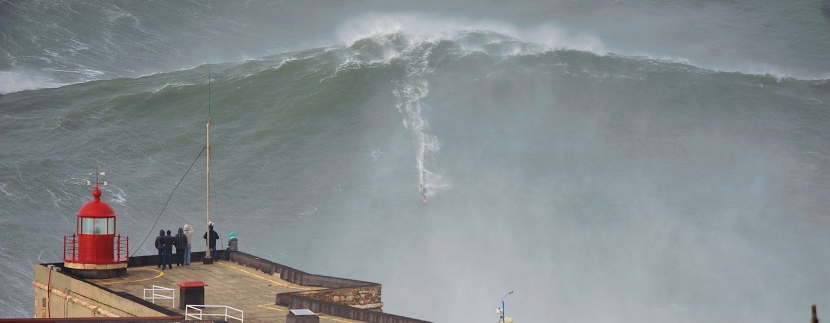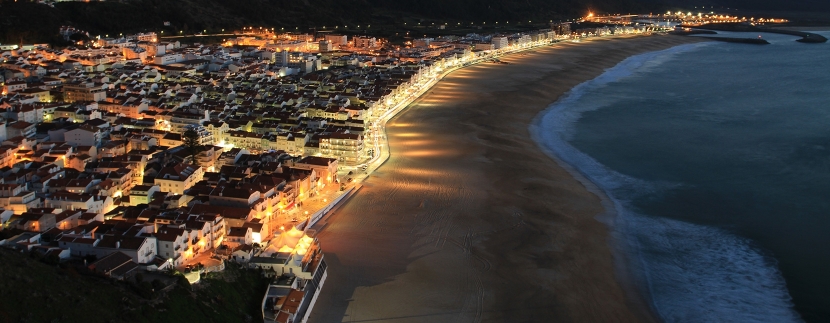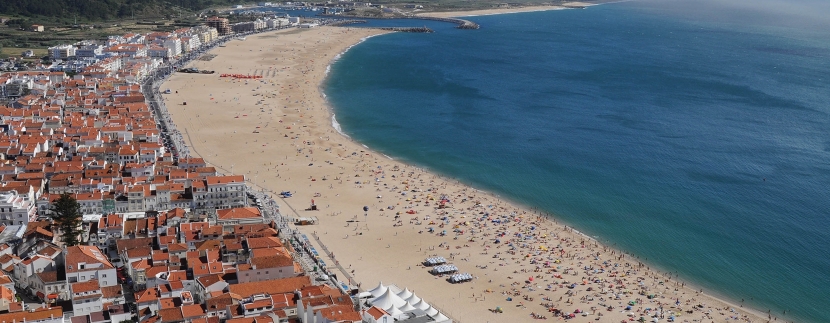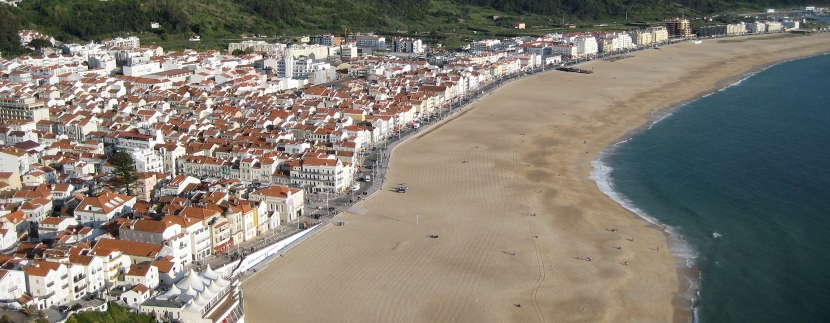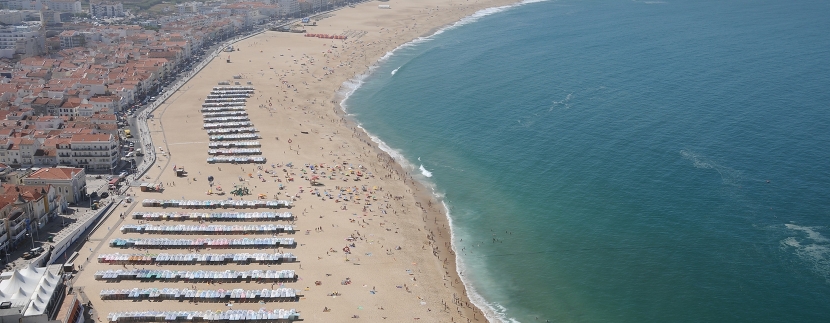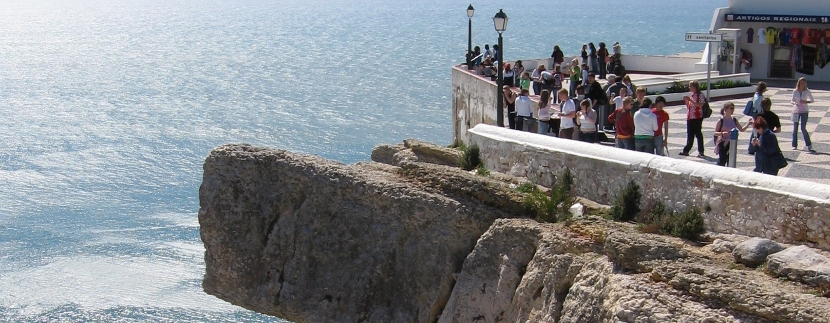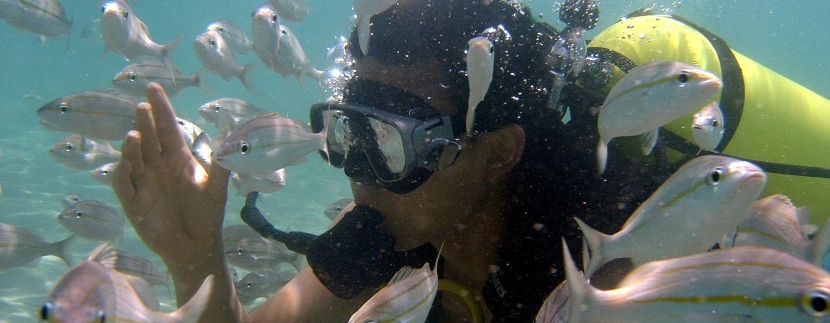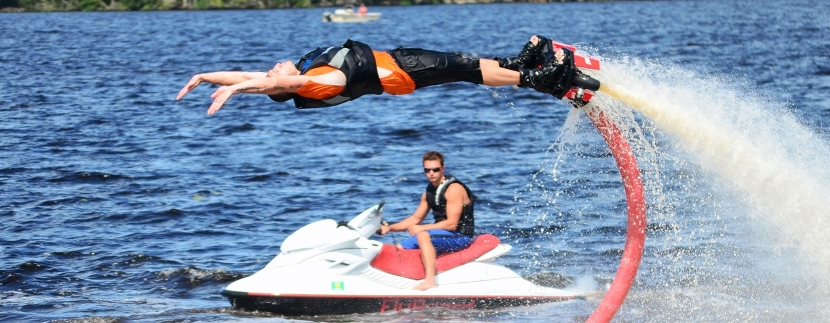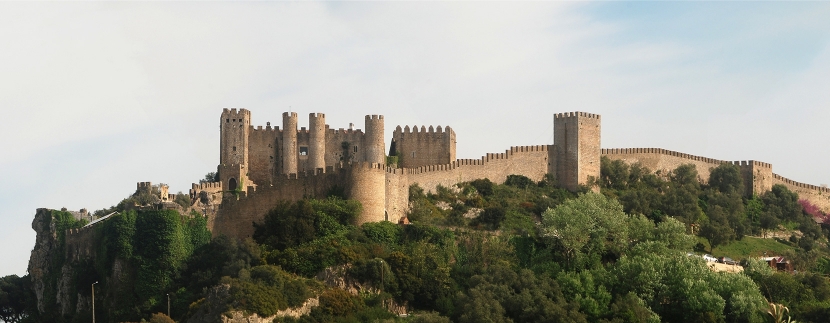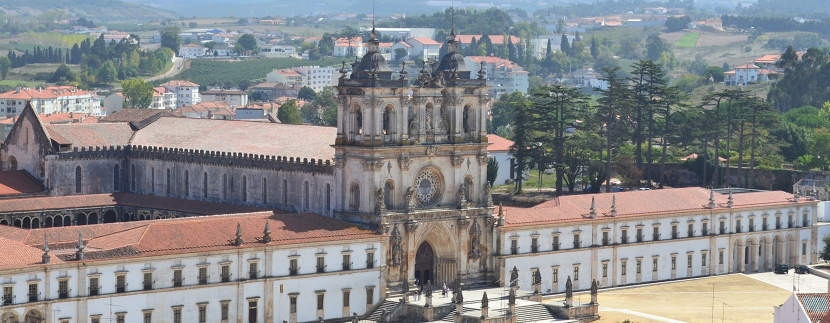Nazaré
Nazaré is ,without doubt, the most famous fishing village of Portugal. Located on the Silver Coast in Portugal Center, Nazaré is a wonderful village to visit. Surrounded by fantastic beaches, Nazaré has an atmosphere full of tradition and life rhythm that can only be described as leisure . Colorful wooden fishing boats fill the marina in all her extension , being an important tool for the village. Anyone wishing to get away for a traditional Portuguese village with beaches, where traditions haven't changed a bit over the centuries and the sandy beaches are seductive , holidaying in Nazaré is a perfect choice.
What to do during your stay
The heart of town is the main avenue. When renting a vacation home in Nazaré for any period of time, you will become familiar with the wonderful restaurants and bars along the avenue. The fish is ,naturally, the base for a big variety of food specialties. Those who like cooking and would like to try some local recipes in your holiday home in Nazaré have everything they need in the huge city market, selling fresh produce, open every morning.
The beach of Nazaré has a large areal, where some small areas are still used by fishermen and their wife's for business, like dried fish. However, it still has several kilometers of sand completely intact. Swimming in the sea is a real pleasure, but water conditions can become too strong for small childrenand and even for adults in some seasons, offering excellent conditions for surfing spot. The marina, just a little out of Nazaré, has room for visiting yachts, and it is a great place for sailing, diving or fishing.
The viewpoints from the top of the village have a sensational view across Nazaré.There are some wonderful walks you can do around the village. Further north, the Atlantic coast becomes more wild and spectacular, with hidden beaches between rocky walls of enormous dimensions. There are some wonderful places to fish further north, and although it is accessible by car, there is nothing more relaxing than walking the coast with a fishing rod.
Places to visit in Nazaré region
Lift
The difficulty of access to the Sítio has always conditioned the development of the place and the attachment of the people. In order to serve the interests of the population and to facilitate the arrival of pilgrims to the Nossa Senhora da Nazaré, it was made a partnership for the construction of a mechanical lift in the late nineteenth century. The author of the project was the french engineer Raul Mesnier du Ponsard, Eiffel's disciple and also responsible for most elevators in Lisbon. The line was established in own bed, running the cable in sight on a roller, with an extension of 318 meters and an inclination of 42%. Inaugurated on July 28, 1889, the lift of Nazaré is considered as one of the best initiatives in the village history, increasing the growth and raising the connection to the beach. It was acquired by the Confraternity of Nossa Senhora da Nazaré in 1924, with a intention to raising funds for the maintenance of the Hospital, and also to facilitate access of the faithful to the shrine. In 1932, it was sold to the City Hall of Nazaré, becoming this entity responsible for the use and conservation of this means of transport considered Municipal Patrimony. The first carriages were driven by a steam engine, which was in operation until 1963, date of the single accident in the history of the elevator. Closed after the disaster, over 5 years, he returned to work with new cars and a new drive system, transmission and electric drive, equipped with a triple braking system. These two lifts worked tirelessly, carrying residents and tourists by mid-September 2001, the date of replacement of the previous with new carriages, more modern, comfortable and safe, whose inauguration took place on 24 June 2002. "Ex-libris" of the village, the Lift is mandatory reference for all who visit Nazaré.
Shrine of Nossa Senhora da Nazaré
The construction of the Shrine of Nossa Senhora da Nazaré dates back to the fourteenth century , when the coming of the king Dom Fernando on pilgrimage to Nossa Senhora da Nazaré. This monarch, besides having ordered rehabiliate of the Ermida da Memória , decided to build a new and improved place of worship since the Ermida was not able to receive the large number of devotees of the Senhora. The new temple was later the target of several royal interventions , which were successively changing and increasing . Dom João I ordered the construction some wooden porches . Dom João II remodeled the plant temple , expanding it and built a new chapel. King Dom Manuel I ordered the replacement of the wooden porches by some in limestone that resist up to the present day.
Nazaré North Canyon
The submarine valley known as Nazaré Canyon is the largest in Europe and one of the largest in the world. Cutting the continental shelf with a direction EW , thereabout, extends for more than 170km in extension and reaches a depth of more than 5000 meters in the abyssal plain where this Canyon ends . This spectacular geomorphological accident with tectonic origin, related to the faiult of Nazaré - Pombal, begins to set it about 500 meters from shore.This underwater throat causes large changes concerning the sedimentary coast traffic, since this valley is a real drain to the sediment from the north, of the coastline drift, which explains the lack of large extensions of sand on the beaches south of Nazareth. The Nazaré Canyon generates the affluence to surface of waters rich in nutrients and plankton, allowing the presence of a very rich fauna species of commercial interest.
Pedralva
With the coming of hundreds of tourists and bathers , in the 30s , an Initiative Committee, whose chairman was José Pedro, had decided that Nazaré needed a park on Monte Branco , where they could see the horizon and charming perspectives from the beach and surroundings. Then a beautiful wooded park was built there, with a pond and a tennis court . It is now a delightful garden, providedwith some leisure infrastructures. From his highest point you can admire one of the most beautiful panoramic views of Nazaré . When we move through this beautiful park we can see a set of stone benches with tiles sets of the decade of 30. This rocky outcrop , known as Pedralva or Monte Branco , is located in the eastern area of Nazaré and is made of a white clay that had ended by characterizing the rock and be reflected in the very name of this elevation.
Alcobaça
Alcobaça is known for its cistercian monastery, around which developed the village, from the fifteenth century. The monastery was founded by D. Afonso Henriques in 1148, and completed in 1222 in gothic style. During the Middle Ages, has even compete with other great Cistercian abbeys in Europe; the "coutos" of Alcobaça constituted one of the largest private domains within the realm of Portugal, covering one of the neighboring municipalities of Alcobaça, Nazaré, and part of Caldas da Rainha, besides having numerous land acquired by barter, tenure or lease all over the country. The monastery was partially burned by the french invaders, led by André Massena, in 1810, secularized in 1834, and then gradually restored. Part of its huge library, with over one hundred thousand volumes and manuscripts, was saved from pallage and fire of the french and pillage of the Portuguese during the liberal wars, finding themselves now preserved in part in Biblioteca Municipal de Braga and the Biblioteca Nacional de Lisboa. In the arms south and north of the transept of the monastery church, can be found two masterpieces of gothic sculpture in Portugal: the tombs of eternal love, King D.Pedro (1357-1367) and D.Inês de Castro.
Fátima
The story of Fátima is associated with three children (the "Pastorinhos de Fátima"): Lúcia and her cousins, Francisco Marto and Jacinta Marto , who on May 13, 1917 , when they were tending their sheep at Cova da Iria , witnessed the appearance of a white lady . The Cova da Iria is where is now the Capela das Aparições. The lady, later referred to as Senhora do Rosário , appeared to have been sent by God with a message: pray , do penance and to consecrate.
Óbitos
The castle of Obidos will have been originally built by the Arabs on the spot that had been occupied by Lusitanian, Romans and Visigoths, and in the context of the expansion of Portuguese territory and Christian reconquest of the Iberian Peninsula, D. Afonso Henriques took this castle around 1148. During the reign of Sancho I, works were executed in this castle, which resist the attacks and remained loyal to King Sancho II, during the crisis that would lead to his deposition and accession to the throne of King Afonso III, this making position would become part of their coat of arms, "mui nobre e sempre fiel" (very noble and always loyal). A special feature of this castle is that after being delivered by King D. Dinis, such as dowry, to the Queen Santa Isabel, became being part of the dowry of the following queens, becoming the residence of Queen D. Leonor, wife of King João II. D. Manuel I, is responsible for major improvements in the castle and the village, being from this time the reconstruction of the "Paços do Alcaide". The earthquake of 1755 caused much damage to the castle, but still would play its role during the french invasions, contributing to the defeat of the french army. Classified as a National Monument, has installed since 1951, the Pousada de Óbidos, occupying the palace style Manuelino builted in the early sixteenth century, and recovered from the injury he suffered in the 1755 earthquake.
Water fun
To all who visit to Nazareth there are in the village numerous water rides such as jetski , flyboard , diving, boating, dolphins sightseeing, boat rental for fishing, etc.
Weather in Nazaré
The weather in Nazaré is stable. In July and August temperatures range between 30 and 40 degrees every day , and although this is the most wanted time to visit , conditions in June and September are a little cooler.
How to travel to Nazaré
The nearest airport is the International Lisbon Airport ( LIS) 100km along the coast . It is advisable to have your own vehicle to get to know the region.




